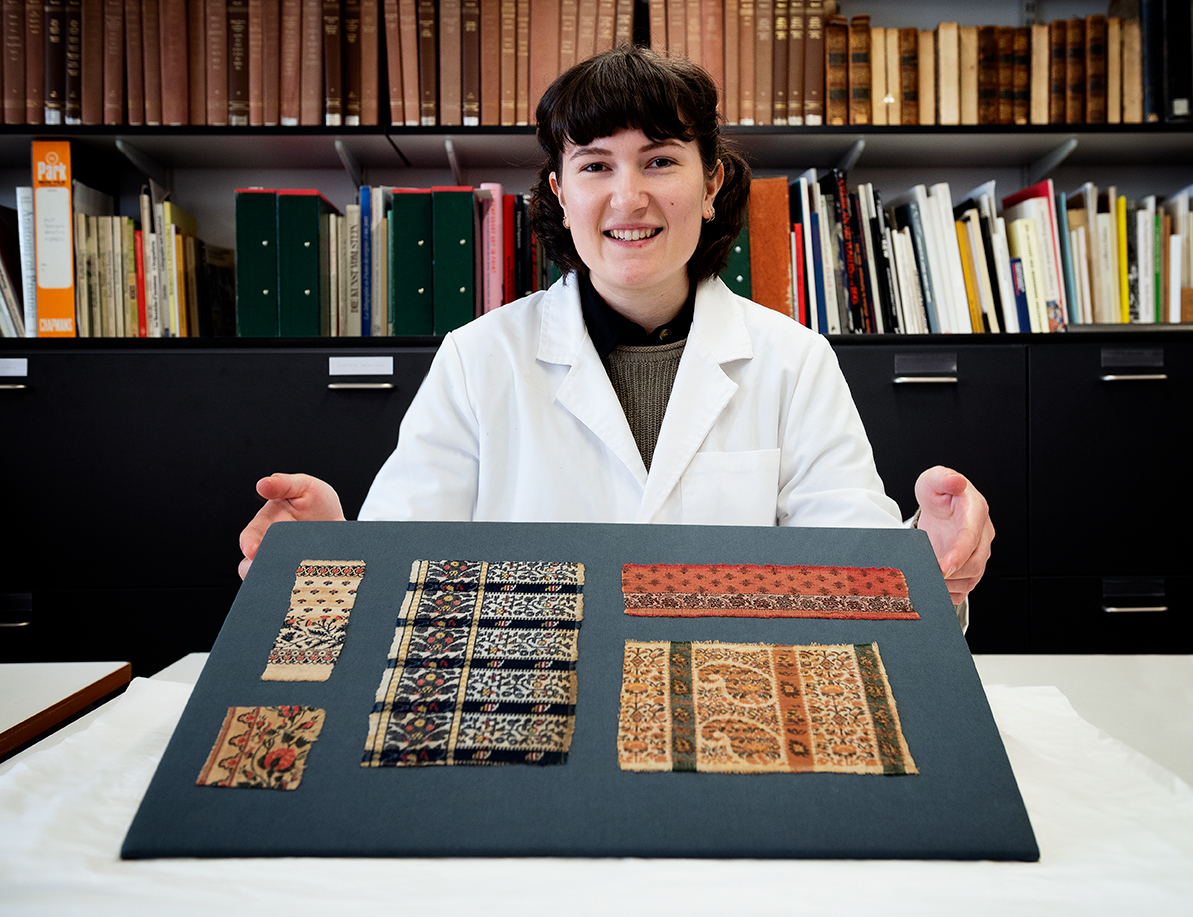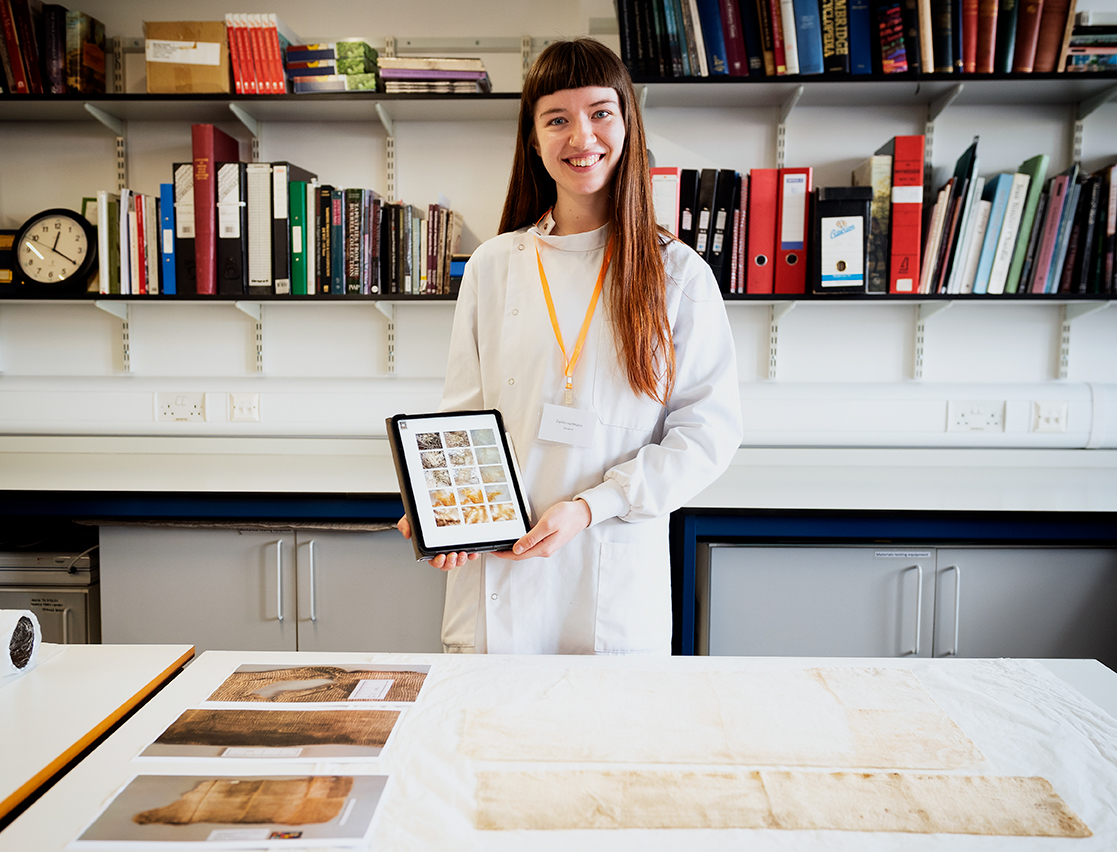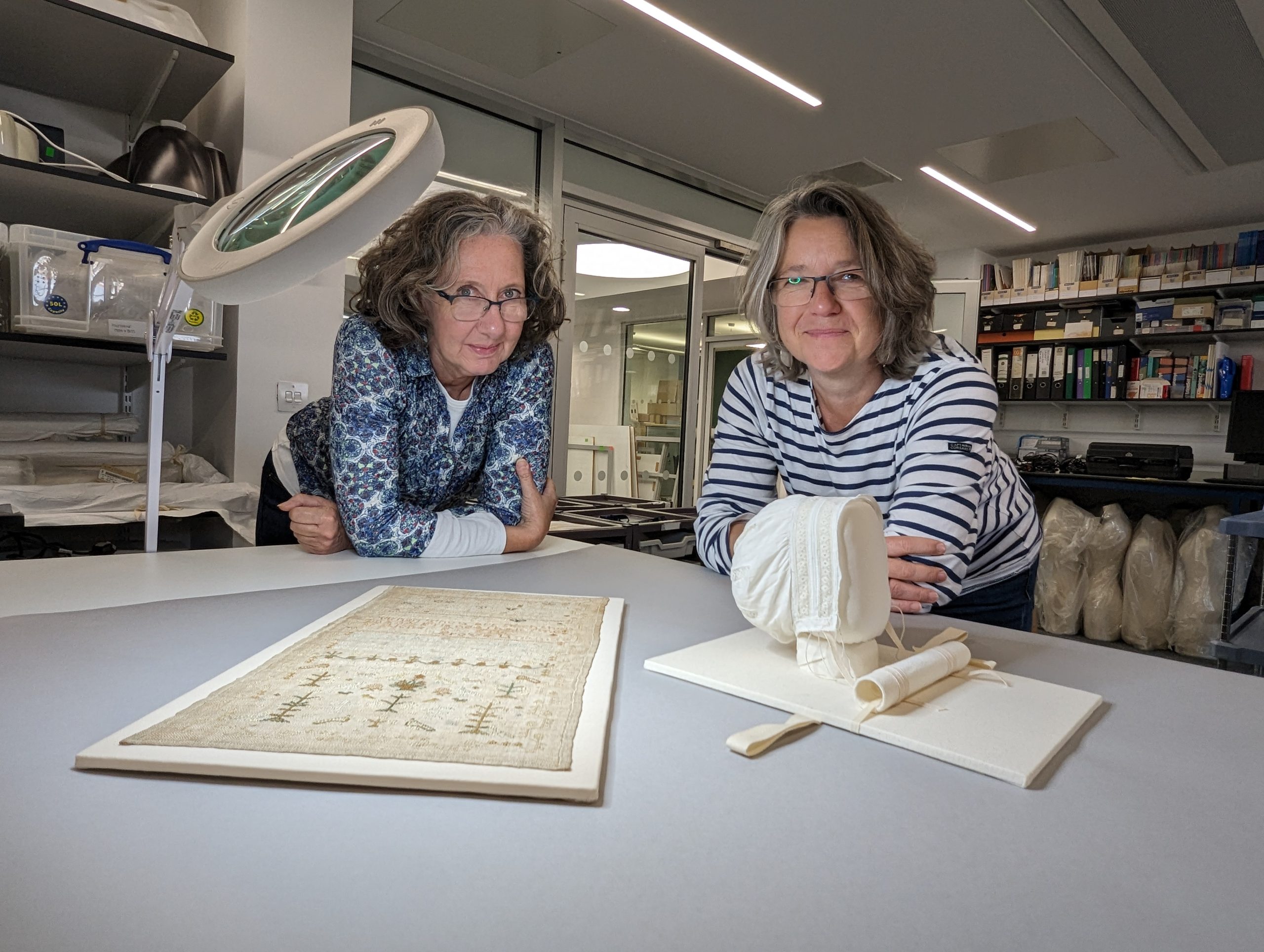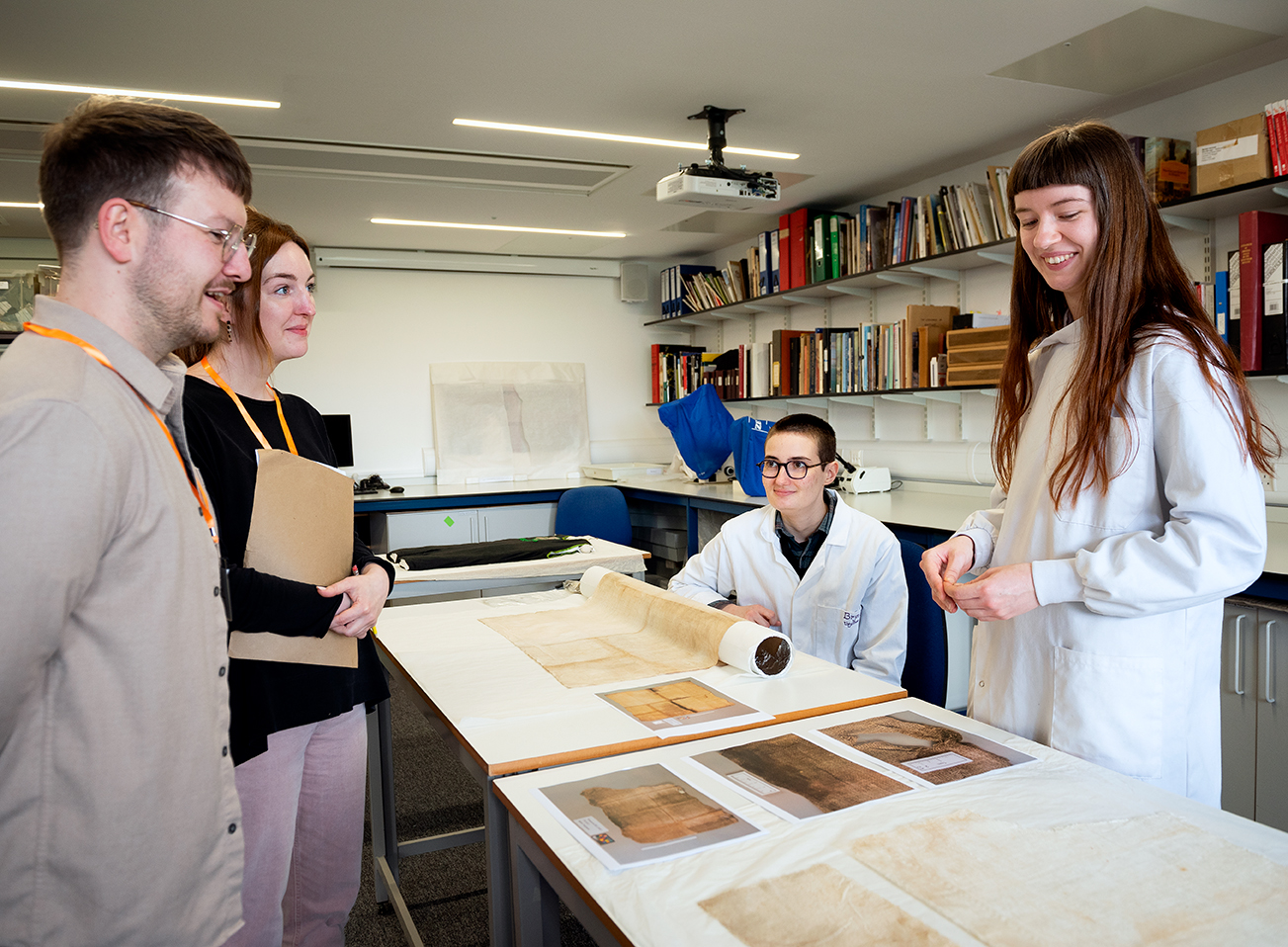Paisley’s rich textile history is being brought back to life, as part of a pioneering partnership which is helping the next generation of conservators to make their mark on Scotland’s biggest cultural heritage project.
As part of the £45 million refurbishment of Paisley Museum, textile conservation students at the University of Glasgow, have conserved items of clothing dating from the 1830s through to the early 20th century. They include a children’s dress and bonnet, as well as a crinoline ‘cage’ skirt and even a knitted woollen water polo uniform.
The university is home to the UK’s only textile conservation programme and, as a global leader, attracts students from across the world.
The partnership with OneRen, the charity which is leading the refurbishment of Paisley Museum, provided a unique opportunity for students to work on objects which will go on display, rather than back into museum stores. The textiles, in many cases, were dirty, laden with decades of industrial dirt and soot and required delicate, painstaking work to transform them.
Caitlin Hartmann, 24 from North Somerset, worked on two textile pieces. She said: “I was phenomenally happy with the results achieved; the soiling was significantly reduced. I was grateful for the trust Paisley Museum put in me as a student to achieve these results and it was a great experience to be able to present this treatment to representatives from Paisley Museum.”
Hannah Lacaille, 25, from Canada, also worked on textiles for the project. She said: “It is always exciting to see evidence of use in an object because one can better imagine the lives of the people who used it. I will be proud to be able to say that I took part in making this happen in a way that is safe for the object so that it may be displayed for generations to come.”

The results have been phenomenal, with marked differences in before and after photos. However, the work of a textile conservator is not about making objects look as good as new.
Programme convenor and textile conservator, Karen Thompson, said: “Conservation is about stabilising and requires a lot of decision making. We’re not the Repair Shop; we’re not trying to make something pristine, it’s all about the context – sometimes you don’t want to remove a stain or a mark, as that’s part of the story. By preserving these objects, it gives the opportunity for people in the future to learn from them.”
Karen’s colleague at the Kelvin Centre for Conservation Research and Cultural Heritage, Sarah Foskett, added: “Textiles are really rich sources of evidence – as you get a direct link to the past – people wore these pieces and they have stories.
“The students have been able to apply their learning to real objects, providing a fantastic learning curve for them. I have never seen objects clean as well in my career. There’s a lot of satisfaction that comes from that and the long term preservation of these pieces and enabling the object to have a new lease of life.”
The team helped conserve 13 objects in total, with more being worked on this academic year. One of the more unusual pieces conserved is a knitted swimsuit from the early 20th century that belonged to a member of the Irish International water polo team. It was exchanged with William G Peacock, an Olympic water polo player who trained at Paisley’s Corporations Baths in Storie Street.
Sean Kelly, Collections and Conservation Manager at OneRen, said: “The work done by the students and the team at the University of Glasgow has been exceptional, helping to bring these incredible objects back to life. This has been a fantastic partnership, bringing benefits for both the conservation and care of these textiles and for the next generation of conservators.
“Of course, what’s even more exciting is that these items will soon be on public display at the refurbished Paisley Museum, where everyone can see for themselves the students’ outstanding work.
“The refurbishment of Paisley Museum is Scotland’s largest cultural heritage project, creating a world-class attraction with community and partnership at its core. I want to extend my thanks to the team at the University of Glasgow for their continued support and their part in making the new museum a reality.”

 Photo Credit: Renfrewshire Council
Photo Credit: Renfrewshire Council


